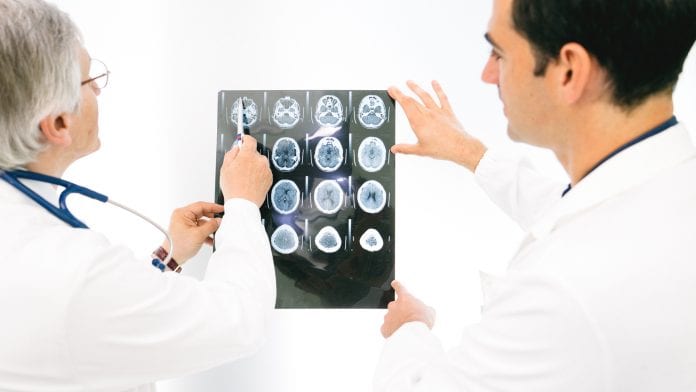
In the future brain cancer patients may no longer need to undergo biopsies thanks to Artificial Intelligence (AI).
Brain cancer patients may be able to avoid needing to go under the knife for a biopsy in order to determine the best treatment for their tumours thanks to AI that can identify a specific brain mutation in a glioma tumour by examining 3D images of the brain with 97% accuracy.
The study, conducted by UT Southwestern, shows that such technology could potentially eliminate the common practice of pre-treatment surgeries in which glioma samples are taken and analysed to choose an appropriate therapy.
The study was published in Neuro-Oncology.
An accurate method of assessment
The study used a deep-learning network and standard magnetic resonance imaging (MRI) to detect the status of a gene called isocitrate dehydrogenase (IDH), which produces an enzyme that in mutated form may trigger tumour growth in the brain.
Joseph Maldjian, chief of neuroradiology at UT Southwestern’s O’Donnell Brain Institute, said: “Knowing a particular mutation status in gliomas is important in determining prognosis and treatment strategies. The ability to determine this status using just conventional imaging and AI is a great leap forward.”
As obtaining an adequate biopsy sample can sometimes be time consuming and risky – particularly if tumours are difficult to access – researchers have been studying non-surgical strategies to identify IDH mutation status.
“The beauty of this new deep-learning model is its simplicity and high degree of accuracy”, says Maldjian, adding that similar methods may be used to identify other important molecular markers for various cancers. “We’ve removed additional pre-processing steps and created an ideal scenario for easily transitioning this into clinical care by using images that are routinely acquired”.
Tumour imaging
The IDH mutation status helps doctors decide on a combination of treatments most suitable for the patient, from chemotherapy and radiation therapy to surgery, to remove the tumour.
To improve the process of detecting enzyme mutations and deciding on appropriate therapy, Maldjian’s team developed two deep-learning networks that analysed imaging data from a publicly available database of more than 200 brain cancer patients.
One network used only one series from the MRI (T2-weighted images), while the other used multiple image types from the MRI. The two networks achieved nearly the same accuracy, suggesting that the process of detecting IDH mutations could be significantly streamlined by using only the T2-weighted images.
Treatment without operating
Next, the team will be testing the deep-learning model on larger datasets for additional validation before deciding whether to incorporate the technique into clinical care.
Researchers are also hoping to develop medications to inhibit IDH through ongoing national clinical trials. If effective, these inhibitors could combine with AI-imaging techniques to overhaul how some brain cancers are assessed and treated.
“In the big picture, we may be able to treat some gliomas without operating on a patient,” Maldjian says. “We would use AI to detect an IDH-mutated glioma, then use IDH inhibitors to slow down or reverse the tumour growth. The field of radio-genomics is exploding with possibilities.”









